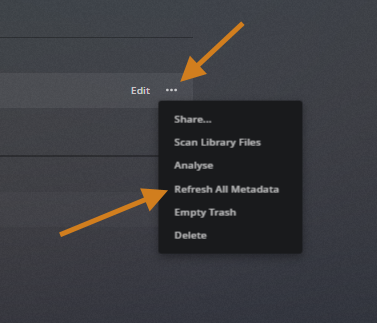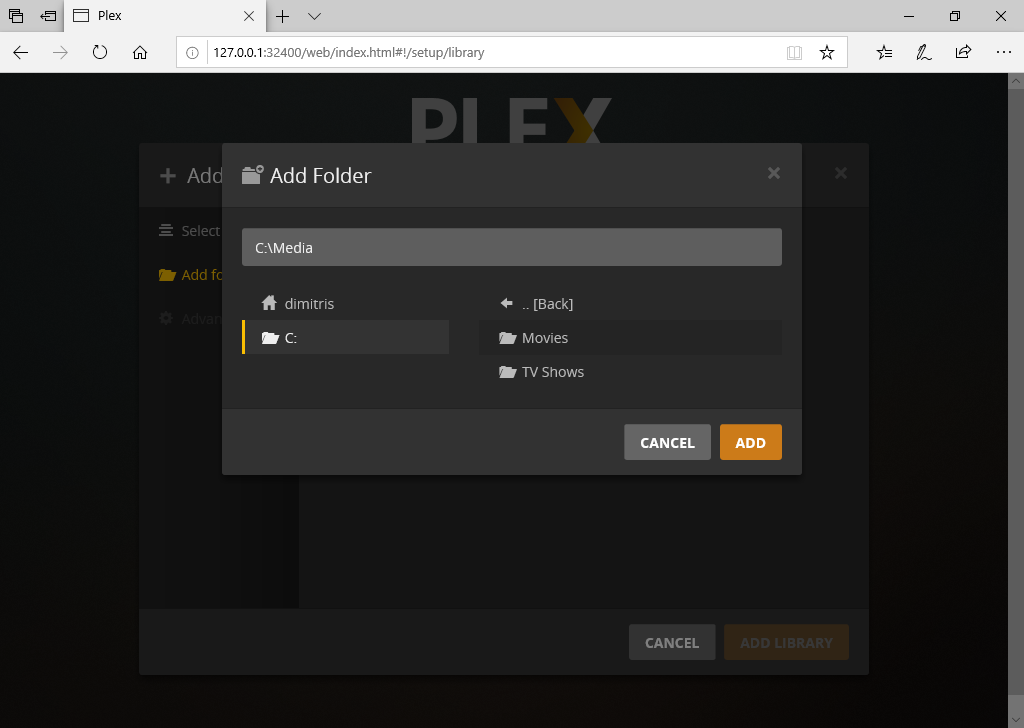Server Version#: 1.16.0.1226
Player Version#: Web Client 3.104.1, Apple TV 4K 2.3 (12437), Infuse Pro 6.0.8 (2607), LG WebOS 3.8.0, Plex for LG 3.103.1
Since migrating my Plex Media Server to a Docker container on unRAID 6.7.x Pro, the number of collections auto-created by Plex is less than half what I had when running PMS on MacOS or Windows. This really doesn’t apply to the player clients listed as they all see the same number of collections.
It is related to the collections that PMS can auto-create when scanning items added to the library. When deciding to migrate PMS to a Docker container on unRAID, I decided to go ahead and start from scratch so all of my media was scanned into new libraries, rather than importing my info from my previous Win10 build.
I have over 4300 movies in my Movies library, so it’s taken a couple of days for me to organize just the posters and fix any errant or un-matched items. However, Plex collections used to number over 450 on my previous PMS installs on MacOS and Win10. The complete rebuild in the official Plexinc Docker container has only auto-created 191 collections.
I have ensured all of the agents like Plex Movie and The Movie Database scanners have the options set to ‘Use collection info from The Movie Database’, just like it was on my older PMS instances. I normally don’t show Collections in the main library view, but only access them from the Collections tab/filter in the clients.
- Find when media was added between STARTFRAME and ENDFRAME to Plex through Tautulli. Checkplay: Check if user has play a file more than 3 times but has not finished watching. Hoping to catch play failures. Checkplexlog: Checking plex logs for debug code WARN and 'Failed to obtain a streaming resource for transcode of key /library/metadata.
- Quit Photos, then press and hold the Option key as you open the Photos app. Select the Library that you want to import your photos to, then click Choose Library. Choose File Import. In the Import window, navigate to the Finder folder that contains the photos and videos that you want to import.
Open a library and select an item. Hover the pointer over the item and click the button in the center OR. Click the item to open the pre-play view to see details. Click the Play button on the top or on the item poster. A Play button is also available for items in the dashboard. Related Page: Plex Web App Player. Plex-Sync is a plugin that lets you sync content from your library to another user by HTTPS or ports. One of the core features of Plex is that it provides you with access to your content library from any device that has the Plex software. Plex-Sync allows you to extend that ability to other users as long as they can access your account.
In trying to troubleshoot, I’ve changed Collections in the Advanced tab of my Movies library from my default of ‘Disabled’ to both ‘Show collections and their items’ and ‘Hide items which are in collections’. No matter which setting, when I force a manual library rescan, refresh metadata or analyze the Movies library, the number of collections remains at 191.
I am hoping there is some trick I can perform to force PMS to re-scan my library and build all collections from scratch. I’ve tried using Scan Library Files, Analyze and Refresh All Metadata in different order but no matter what, the collections never get re-created and I’m left with the same 191.
I do still have the full Plex Media Server application support folder from my previous Win10 install. If there’s a way for me to export the collections from that install and then import them into my unRAID Plex Docker install, I’m more than willing to try. Or if anyone has a suggestion how I might force PMS to rebuild all collections from scratch, that would be great too!.
As it took me a couple of days to correct all the poster art and errant matches, I really don’t want to start over with a fresh library and then have to re-do all my poster art, matching and metadata corrections. I will most certainly be willing to add collection tags for the custom collections I previously had, but hope there’s a way to at least build a more complete ‘starting over’ set of collections.
Any help/suggestions are appreciated! Thanks!
Overview¶
Unofficial Python bindings for the Plex API. Our goal is to match all capabilities of the officialPlex Web Client. A few of the many features we currently support are:
Navigate local or remote shared libraries.
Perform library actions such as scan, analyze, empty trash.
Remote control and play media on connected clients, including Controlling Sonos speakers
Listen in on all Plex Server notifications.
Installation & Documentation¶
Documentation can be found at Read the Docs.
Join our Discord for support and discussion.
Getting a PlexServer Instance¶
There are two types of authentication. If you are running on a separate networkor using Plex Users you can log into MyPlex to get a PlexServer instance. Anexample of this is below. NOTE: Servername below is the name of the server (notthe hostname and port). If logged into Plex Web you can see the server name inthe top left above your available libraries. Film five feet apart sub indo.
If you want to avoid logging into MyPlex and you already know your auth tokenstring, you can use the PlexServer object directly as above, by passing inthe baseurl and auth token directly.
Usage Examples¶
Controlling Sonos speakers¶

To control Sonos speakers directly using Plex APIs, the following requirements must be met:
Active Plex Pass subscription
Sonos account linked to Plex account
Plex remote access enabled
Due to the design of Sonos music services, the API calls to control Sonos speakers route through https://sonos.plex.tvand back via the Plex server’s remote access. Actual media playback is local unless networking restrictions prevent theSonos speakers from connecting to the Plex server directly.

Running tests over PlexAPI¶
Use:
with appropriatearguments and add this new server to a shared user which username is defined in environment veriable SHARED_USERNAME.It uses official docker image to create a proper instance.
For skipping the docker and reuse a existing server use
Also in order to run most of the tests you have to provide some environment variables:
PLEXAPI_AUTH_SERVER_BASEURL containing an URL to your Plex instance, e.g. http://127.0.0.1:32400 (without trailingslash)
PLEXAPI_AUTH_MYPLEX_USERNAME and PLEXAPI_AUTH_MYPLEX_PASSWORD with your MyPlex username and password accordingly
Plex Import Photos Library Login
After this step you can run tests with following command:
Some of the tests in main test-suite require a shared user in your account (e.g. test_myplex_users,test_myplex_updateFriend, etc.), you need to provide a valid shared user’s username to get them running you need toprovide the username of the shared user as an environment variable SHARED_USERNAME. You can enable a Guest account andsimply pass Guest as SHARED_USERNAME (or just create a user like plexapitest and play with it).
To be able to run tests over Mobile Sync api you have to some some more environment variables, to following valuesexactly:
PLEXAPI_HEADER_PROVIDES=’controller,sync-target’
PLEXAPI_HEADER_PLATFORM=iOS
PLEXAPI_HEADER_PLATFORM_VERSION=11.4.1
PLEXAPI_HEADER_DEVICE=iPhone
And finally run the sync-related tests:

Common Questions¶
Why are you using camelCase and not following PEP8 guidelines?
This API reads XML documents provided by MyPlex and the Plex Server.We decided to conform to their style so that the API variable names directlymatch with the provided XML documents.
Plex Import Photos Library Download
Why don’t you offer feature XYZ? Msi ms 7326 motherboard manual.
This library is meant to be a wrapper around the XML pages the Plexserver provides. If we are not providing an API that is offerered in theXML pages, please let us know! – Adding additional features beyond thatshould be done outside the scope of this library.
What are some helpful links if trying to understand the raw Plex API?